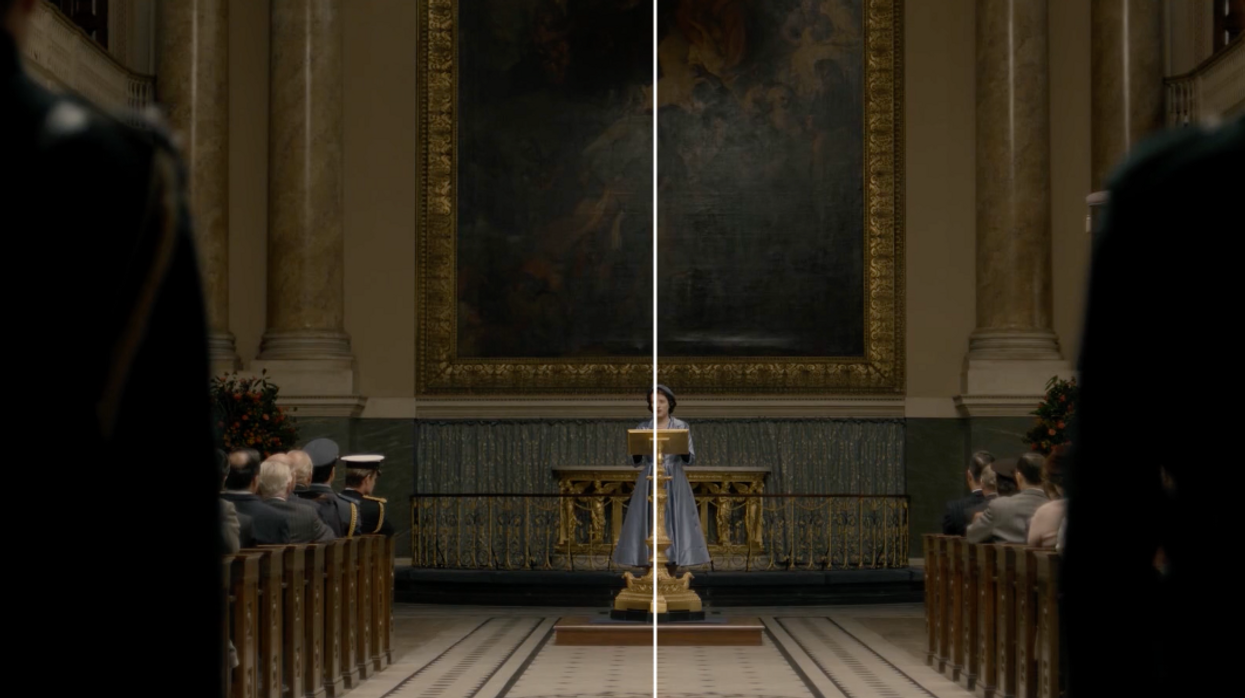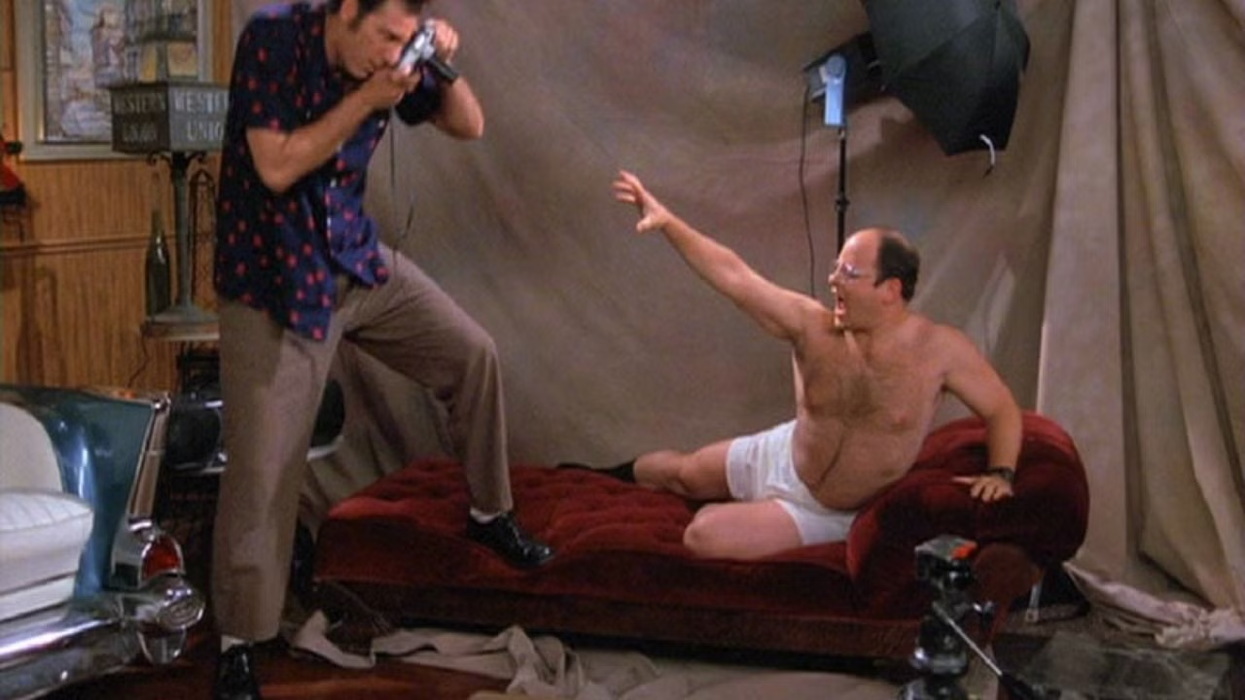Watch: In 'The Crown,' Centering Creates a Regal Mood
The Crown is a great example of smart framing technique.

Framing is an extraordinarily useful device. It can be used to do a number of things: to keep viewers focused on a story, particularly in action-based films; and to draw viewers into the relationships playing off each other within a larger story. (Think of all the small window-frames contained in the larger film frame in Rear Window—you never know which frame might be the next one to explode with action.)
As the below video essay by Zackery Ramos-Taylor shows, framing can also create a mood. Thanks to the work of cinematographers Adriano Goldman and Ole Bratt Birkeland, framing creates a regal atmosphere in The Crown and places the Queen at its epicenter.
The semblance of order
As one government building, estate, doorway, auditorium, or other architectural space surfaces on the screen in this series, the camera treats it as if it were an emblem of mathematical symmetry. What we know, though, is that beneath these facades lurk unending turmoil—most of it stemming from Elizabeth's quest to establish a place for herself in a male-dominated world, even as that microcosm struggles with mid-century world chaos.
Queen Elizabeth is the epicenter
The Crown bears down on Elizabeth, as did the times she lived in, and the camerawork reflects this. She is all too often placed at the center of a room, at the point where lines of perspective converge. Why? Because the position she holds is, within the framework of the story, one of the most important positions in the world. All eyes are on her, in both a symbolic and a literal sense. The camerawork builds pressure within the story, helping to give meaning to the events in its plot. The filmmaker turns what could have been a dry historical recounting of events into a drama.
The Queen's position is a still point in a moving world.
There are many moments in The Crown when we can see figures moving around the center of the frame, indicated architecturally or by a well-blocked actor. Though the majority of figures might not be centered—or might be in motion towards or away from the center—that studied imbalance only throws the true center of the frame into relief: the Queen's position is a still point in a moving world. While we can pretend to side-step symmetry, and while our daily activities may not bring us into direct contact with the holders of power, their power nevertheless exists, timelessly.
How else do you see framing working in The Crown? What other cinematic techniques are in play here?











